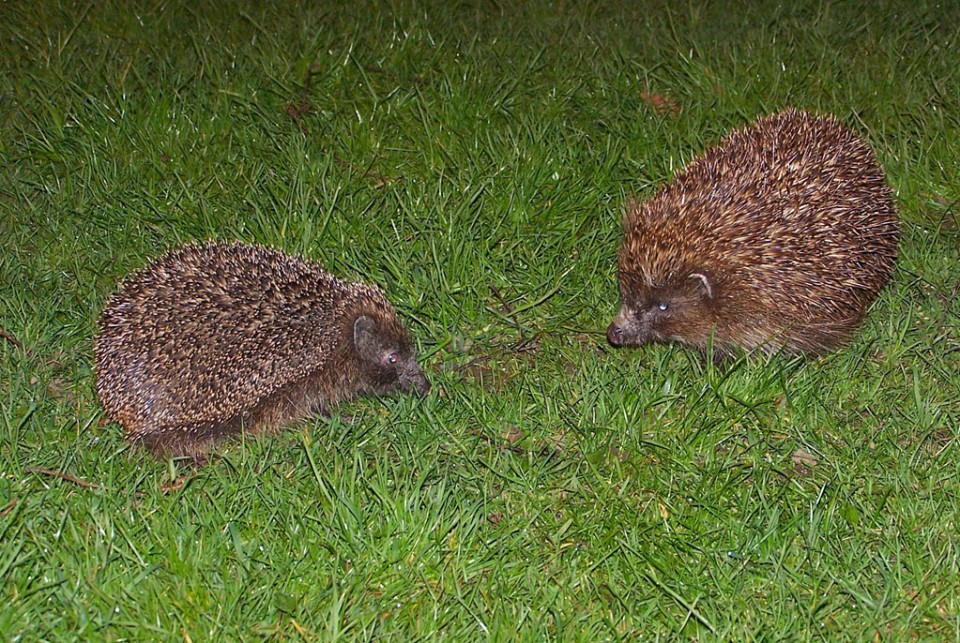European Hedgehog Behaviour - Introduction
European hedgehogs don’t demonstrate the level of social interaction or the same complex social dynamics seen in other mammals, such as badgers, foxes or primates. Instead, they are largely solitary creatures that appear to shun the company of others outside of the breeding season and away from feeding stations. Nonetheless, they are not totally asocial and they exhibit some fascinating, if a little quirky, behaviours.

In his 1981 The Mammalian Radiations, the late mammologist John Eisenberg described and classified the social systems of mammals. Eisenberg divided mammals into 11 groups based on the degree of social contact during mating and courtship; from solitary ranging through to monogamy. Nigel Reeve notes that hedgehogs are typically classified within the 'type one' system of Eisenberg's scheme owing to, amongst other traits, their fundamentally solitary lifestyle. Within this type one group there are two variants: the first involves “semiexclusive adult home ranges regardless of sex”; the second “considerable home range overlap between opposite-sexed adults”. Hedgehogs probably more closely fit this second variant, although in some situations overlap can be observed in the ranges of both sexes and there is no evidence that hedgehogs establish or defend a territory (see Territory and Home Range).
So, if this species is as solitary and antisocial, how do they prevent aggressive encounters without using a territory? The answer seems to be that they try and keep out of each other’s way. In his 1969 Ph.D. thesis, Pat Morris suggested that hedgehogs might use mutual avoidance to allow non-simultaneous use of the same area, thereby avoiding direct competition and/or conflict. Hedgehogs are very alert while foraging, stopping and sniffing the air every few seconds, and Morris suggested that they may use scent to avoid one another.
Tracking studies generally suggest that hedgehogs rarely meet in the wild, providing support for Morris’ theory. Indeed, while tracking hedgehogs in eastern Finland, Anni Rautio and colleagues observed that females avoided each other during the nesting season and, during his studies on the suburban golf course in west London, Nigel Reeve observed only 17 non-sexual encounters, representing only 0.7% of the 2,568 clearly visible interactions; four (0.2% of all interactions, but 24% of non-sexual interactions) involved fights between males. Andrew Wroot recorded four fights (0.06%) during the 6,154 observations of hedgehogs he made during his Ph.D. studies in London, although he doesn’t mention how many of the total observations involved non-violent or non-sexual meetings. Wroot also suggested the use of body odour cues as a means of avoiding each other and, in support of this idea, in Hedgehogs, Reeve wrote:
“… animals (of either sex) approached to within a few metres of each other, then paused, sniffed the air and changed direction. The animals were silent, showing no overt aggression …”.
This ties in with my own observations that hedgehogs seem able to identify others are nearby in pitch dark conditions, without any audible cues that are noticeable to the observer. One of the trailcam videos recorded in our garden illustrates the point nicely. A boar broke off courtship circling of a sow to push another male off the patio. The interloping male was sat on the patio in the dark just over a metre (3 ft.) from the courting couple. I'm inclined to believe that the courting boar identified the presence of this other male by scent, implying that scent may also carry information about the sex of the interloper.